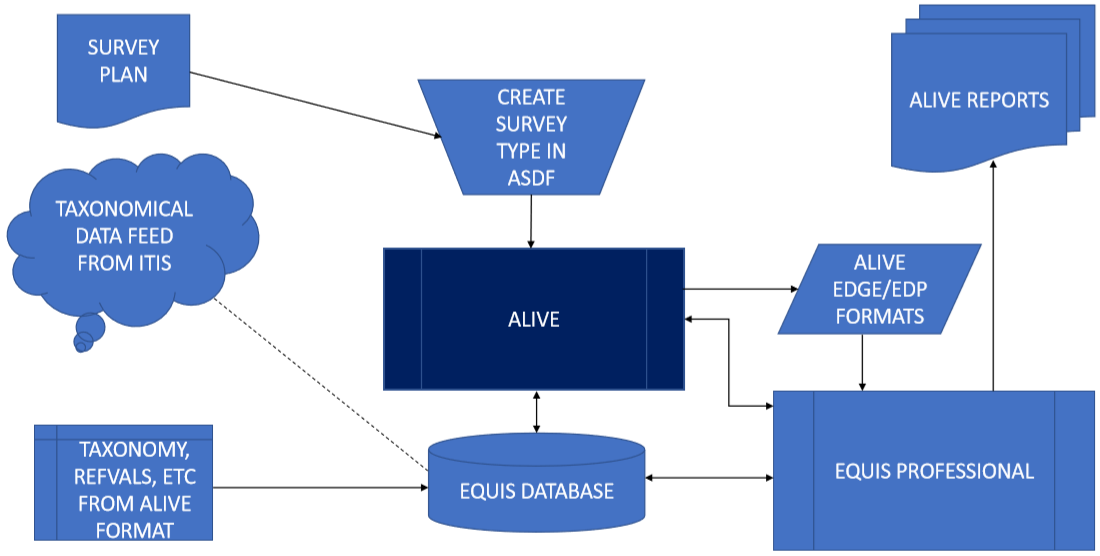This article is an overview of the main components of EQuIS Alive.

EQuIS Alive Surveys, Observations, and Subfacilities
EQuIS Alive is built around the concept of performing surveys, and each survey consists of a set of observations made during that survey. See Create an Alive Survey for further detail.
EQuIS Alive Subfacilities
Because surveys can be performed over large spatial areas, surveys are tied to subfacilities in EQuIS, instead of locations. The Alive formats (i.e., surveys) require that the subfacility be populated (DT_SURVEY.SUBFACILITY_CODE lookup column links to DT_SUBFACILITY.SUBFACILITY_CODE). Optionally, survey observations may also be associated with subfacilities (DT_SURVEY_OBSERV.SUBFACILITY_CODE).
Why subfacilities and not locations? A location traditionally represents a single point in EQuIS, such as a monitoring well or weather station. Subfacilities typically address areas rather than points, though they can still represent a point. Subfacilities can be used for sections of a facility, lakes, parts of a lake, fields, streams, a forest, etc.
Additionally, given the different nature of EQuIS Alive surveys, the DT_COORDINATE table (as a child of DT_LOCATION) may not be a good fit for the spatial data associated with surveys and observations. Therefore, the DT_SPATIAL_EXTENT table was introduced to support the different spatial data needs of surveys and observations. For further details on the DT_SPATIAL_EXTENT table, please refer to the help article Spatial Data Tables.
EQuIS Alive Taxonomy
Observations made during a survey typically revolve around some species of flora or fauna. This list of species is contained in a hierarchical table, RT_TAXONOMY. RT_TAXONOMY is configured so that the species can be grouped together in a logical fashion.
This hierarchy of grouping can be as complex as the full taxonomical rankings:
•Life
▪Eukaryota
▪Animalia
oChordata
•Aves
▪Passeriformes
▪Passeroidea
▪Passeridae
opasser domesticus (House Sparrow)
▪Plantae
oetc...
or as a simple flat list of species:
•Passer ammondendri
•Passer domesticus
•Passer italiae
It is recommended, and the most usable, to create a table structure that falls somewhere in between these two extremes. An example structure might be:
•Animalia
•Birds
▪Passer domesticus
▪etc...
•Fish
▪etc...
•etc...
•Plantas
•Trees
▪etc...
•etc...
•etc...
An important note is that, by setting up groups of species in the RT_TAXONOMY table, there is no need to set them up in the RT_GROUP table. Any level of the taxonomy structure can be associated with a particular survey, and that survey will include any child records with that RT_TAXONOMY.TAXONOMY_CODE. See the help article Create an Alive Survey for further detail.